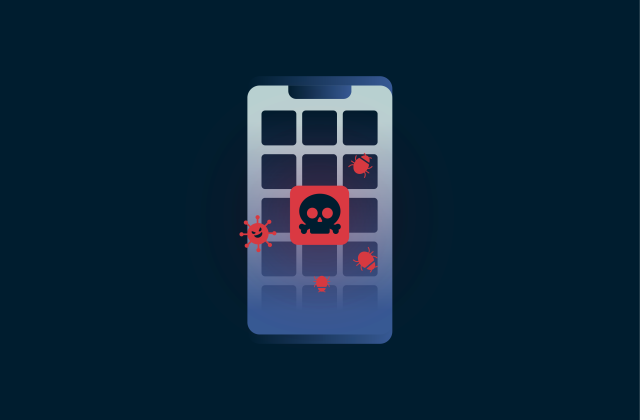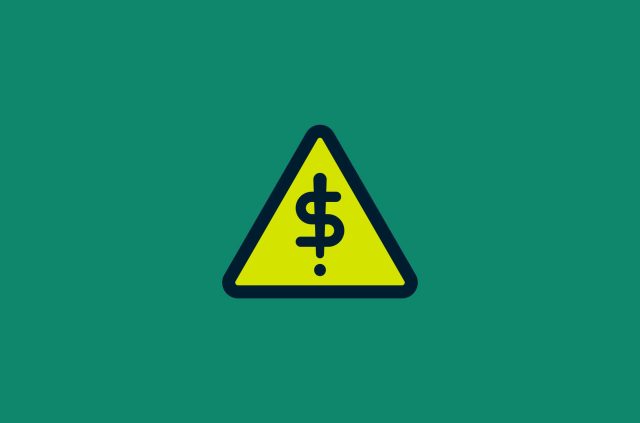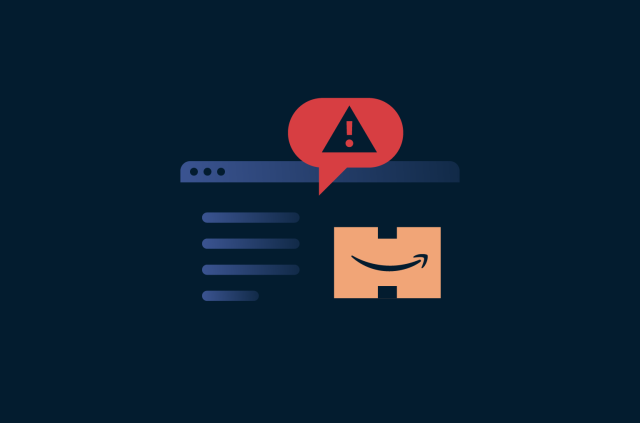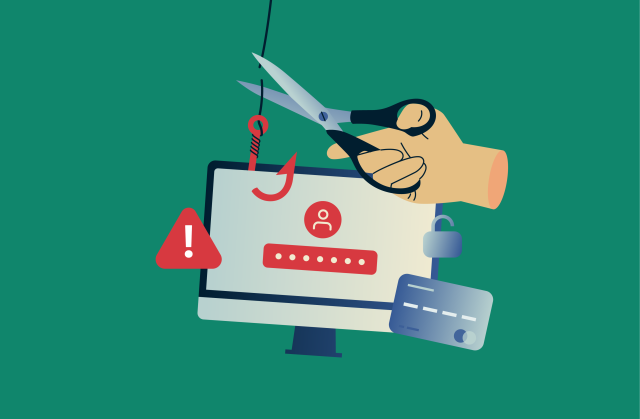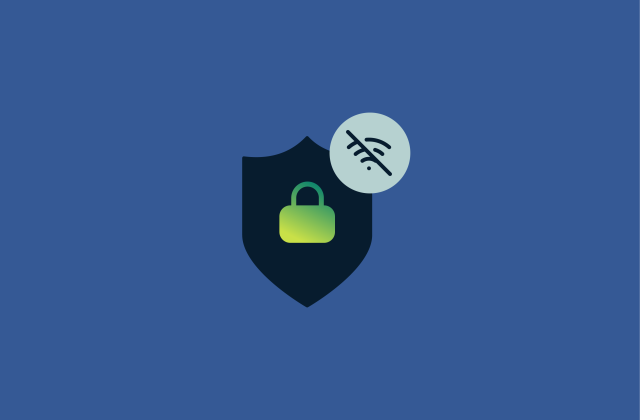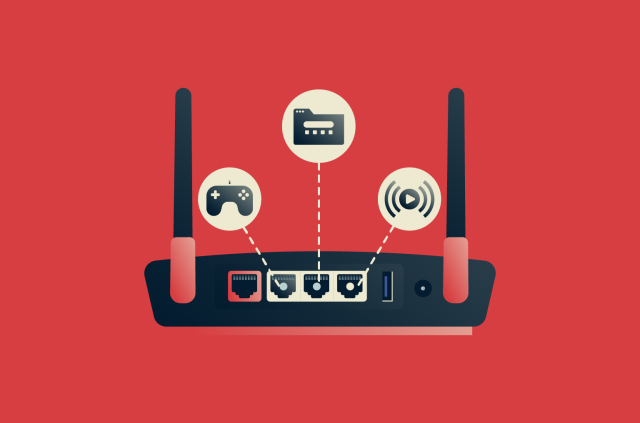Is Facebook Marketplace safe? How to avoid scams and stay protected
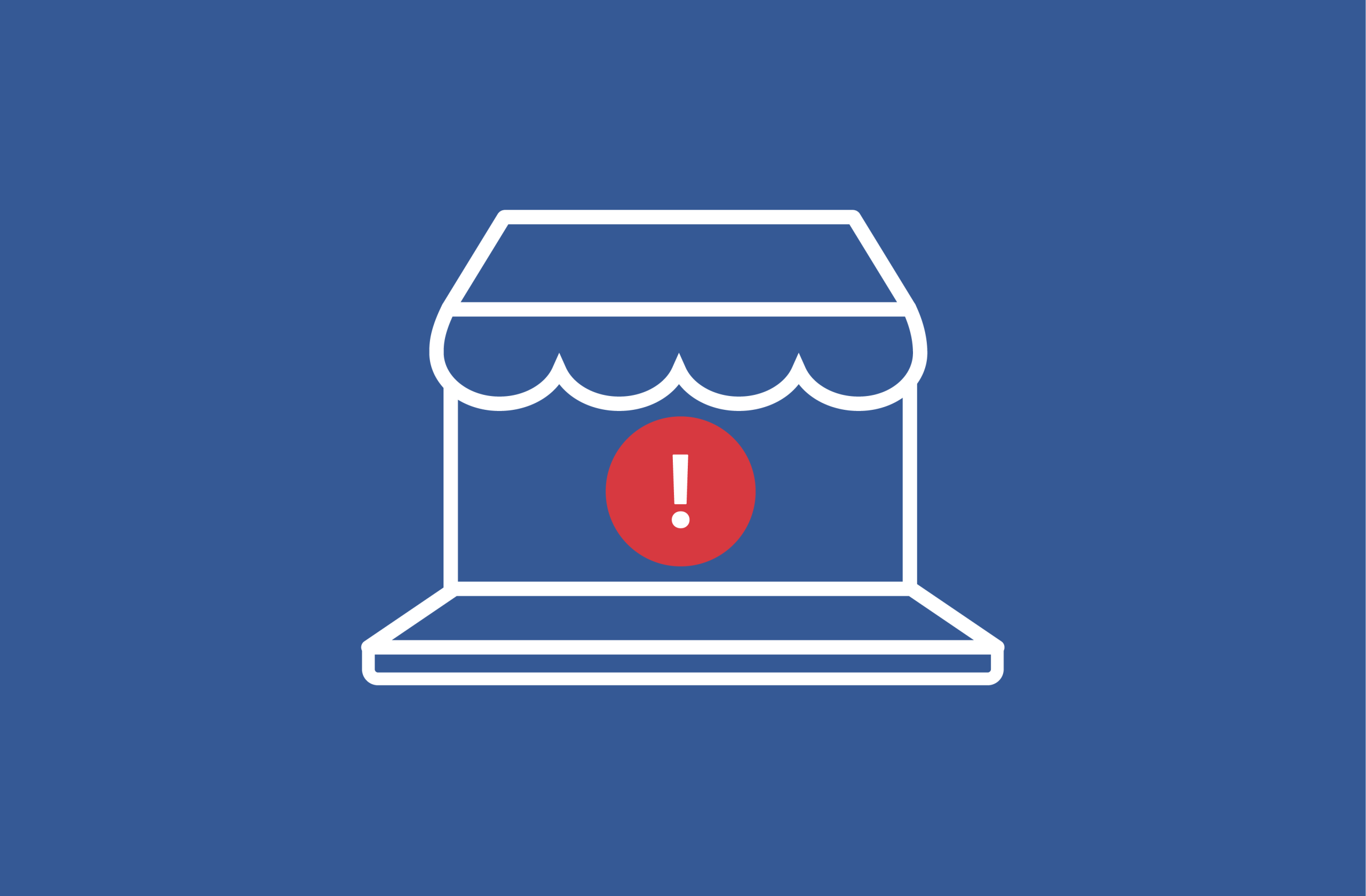
Facebook Marketplace is one of the easiest ways to buy and sell stuff locally. But as more people use the platform, it’s also become a hotspot for scammers. Fake profiles, sketchy payment requests, and bait-and-switch tactics are just a few tricks bad actors use to take advantage of others.
So, is Facebook Marketplace safe? That depends on how you use it. While the platform itself isn’t inherently dangerous, the lack of built-in protections means you have to stay sharp. Whether you're clearing out your garage or looking for a good deal, knowing what to look for can make all the difference.
This guide explains how Facebook Marketplace works, the most common scams to watch out for, and the steps you can take to protect yourself. If you’ve ever wondered whether that amazing deal is real or what to do when a seller ghosts you, you’re in the right place.
What is Facebook Marketplace?
Facebook Marketplace is a section of Facebook’s app and website where people can buy and sell items, both locally and across regions. It started in 2016 as a platform for individual users, kind of like Craigslist or those old-school newspaper classifieds, where everyday users could list things and connect with buyers nearby.
Over time, it’s expanded to include tools for businesses and retailers, so you can now find everything from used furniture and electronics from individual sellers to brand-new products offered by verified shops, often with shipping options.
Marketplace is one of Facebook’s most widely used features.
How does Facebook Marketplace work?
Sellers can list items by uploading photos, writing a short description, setting a price, and choosing whether to offer local pickup or shipping. Buyers browse listings based on location, category, or search filters and can message sellers directly through Facebook Messenger to ask questions or negotiate.
Anyone with a Facebook account (meeting minimum age and location requirements) can list items for free. Sellers only pay a small fee if they use Facebook’s shipping and Checkout system.
Facebook Marketplace doesn’t verify most users or reviews, and it doesn’t enforce strict listing rules beyond banning certain items. This means that scams and fake profiles are a risk.
Local transactions
Most transactions happen locally and in person. A buyer meets the seller somewhere public, pays in cash or with an app like Google Pay, and walks away with the item. It’s quick and informal but also comes with risks. There’s no built-in support, no refunds, and no way to open a dispute through Facebook for local or off-platform transactions.
Shipped orders
If the seller enables shipping and uses Facebook’s Checkout system, the transaction may be eligible for Purchase Protection. Coverage only applies if a few specific conditions are met:
- The buyer paid using Facebook’s onsite Checkout.
- The item follows Facebook’s Commerce Policies (e.g., not a restricted item and priced under $2,000, including tax and shipping).
- The item was shipped with tracking uploaded to Facebook.
In these cases, buyers may be eligible for a refund if the item doesn’t arrive or is significantly different from the description.
Keep in mind: if you pay in cash, use a bank transfer, or arrange delivery outside Facebook’s system, you won’t be covered by Purchase Protection, even if the item was listed on Marketplace.
7 common Facebook Marketplace scams to watch out for
Scammers may use Facebook Marketplace, just like any other online marketplace. The common scams rely on the same tricks used in phishing and social engineering: urgency, deception, and misplaced trust. Some target buyers, others go after sellers, but the goal is always the same: separate you from your money and disappear without a trace. Here are some of the most common Marketplace scams.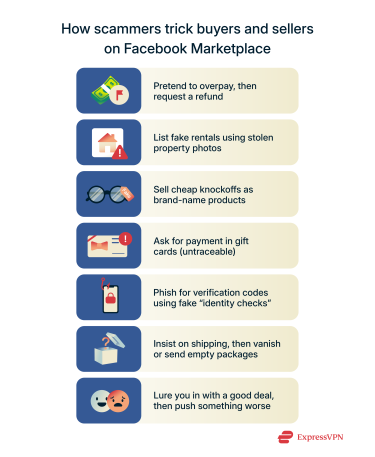
1. Overpayment scams
This scam usually targets sellers. A buyer agrees to your price but claims they accidentally sent too much. You might get a fake payment confirmation or a convincing screenshot showing an overpayment. Then they’ll ask you to send the difference back via a payment app or wire transfer.
The catch? The original payment never happened. It’s either a fake notification or a pending transfer they’ll cancel after you refund them. These scams create urgency and make it feel like you made the mistake. If you send money before verifying the payment in your actual account, it’s already too late.
2. Fake rental listings
Scammers steal photos from real property listings, like homes, apartments, or vacation rentals, and repost them as if they’re the owner. The price is usually below market rate, and the “landlord” or “agent” pressures you to send a deposit quickly.
They often claim they’re out of town or can’t show the property in person. As soon as the payment is sent (typically through something untraceable like Zelle, Cash App, or gift cards), the listing vanishes. There’s no apartment. No keys. No way to get your money back.
This scam is especially common in tight housing markets or student rental areas, where urgency pushes people to take risks.
3. Counterfeit or fake items
Scammers often use stock photos or edited images to advertise brand-name products. These can include electronics, sneakers, luxury handbags, tools, or appliances. The listings usually look convincing, and the prices are just low enough to seem like a good deal without raising suspicion.
When the item shows up, if it does at all, it’s often a cheap knockoff or doesn’t work. Some sellers avoid in-person meetups and push for shipping to avoid being confronted. Without proper documentation or buyer protection, you could end up with a worthless item and no way to get your money back.
If you can't see and test the product in person, be cautious. The more valuable the item, the higher the risk of it being fake or misrepresented.
4. Gift card payment requests
Gift cards are a favorite tool for scammers because they can't be traced or reversed and are easy to resell. A seller may ask you to pay using Amazon, Apple, Steam, or Google Play gift cards. Once they get the codes, the money is gone.
They might say their account is having problems with regular payments or claim that gift cards are just more convenient. That is always a red flag. No legitimate transaction on Facebook Marketplace should involve gift cards. Once the code is sent, there is no way to get your money back.
Learn more: Find out how to make secure online payments.
5. Phishing and verification code scams
In this scam, the fraudster pretends to be a buyer. Instead of asking about the item, they say they want to confirm you are a real person. They ask for your phone number and say you will get a verification code.
What they are really doing is trying to create a Google Voice, or similar Voice over Internet Protocol (VoIP), account. If you give them the code, they can link your number to their scam account. From there, they can hijack your number and impersonate you, spam others, or create fake accounts tied to your phone number.
In some cases, scammers may also use the code to reset passwords or access other accounts linked to your phone number.
6. Shipping and mail fraud
Some sellers push for shipping and ask to be paid through apps like PayPal (the "Sending to a friend" option), Venmo, or bank transfer. After you send the money, one of two things happens. Either the item never arrives, or they send an empty box with tracking just to show something was delivered.
Because these payment methods don’t offer protection for purchases, you have little or no way to get a refund. Even if you open a dispute, the tracking number might be used as proof that the item was delivered. In some cases, scammers send broken or totally different items, hoping you will be too frustrated to follow up.
7. Bait-and-switch tactics
Not every scam is about fake payments or missing items. Some are more subtle. A seller might post a popular product at a great price just to get your attention. But when you message them, they claim the item is already sold and try to offer you something else.
This might be a lower-quality item or something more expensive. The goal is to get you emotionally invested and more likely to agree to a deal without thinking it through. Once you are in that mindset, you are more likely to overpay or buy something you didn’t really want.
How to identify a Facebook Marketplace scammer
Scammers don’t usually start off looking suspicious. Most try to blend in with polished listings, normal-looking profiles, and friendly messages. But once you know what to watch for, the red flags become much easier to spot.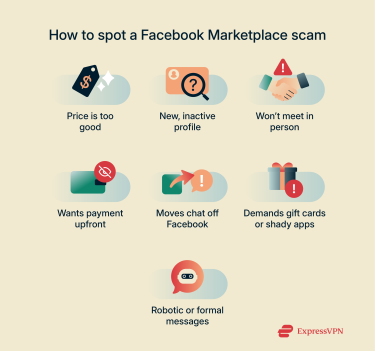
- Unrealistically low prices: If an item is listed at a steep discount with no clear reason, it could be bait. Scammers often count on you rushing to grab a deal that seems too good to be true. Always compare prices with similar listings. If it’s far below market value and there’s no catch explained, assume there’s one you’re not being told.
- Brand new seller profile: No public posts, no friends, and just a handful of listings? That’s a red flag. Even if the profile has a name and photo, it could be copied from someone else. If everything was posted in the past day or two, the account may exist just to run scams.
- Refusal to meet in person: One of the biggest red flags for fake local listings is a seller who won’t meet you. They’ll give vague excuses like being out of town, sick, or having the item already boxed up. If they’re local but still avoid a public meetup, it could mean there’s no item at all.
- Request for upfront payment: If a seller asks you to pay in full before you’ve seen the item (especially via unprotected methods like Zelle, Venmo, or gift cards), be cautious. Many scammers promise to hold or ship the item right away, but once they get paid, they vanish. Unless you’re using Facebook Checkout for an eligible listing, there’s no way to get your money back.
- Push for off-platform communication: If someone asks you to switch to text, email, or WhatsApp early in the conversation, be careful. This is often a tactic to move the deal away from Facebook, making it harder for you to report them or trace what was said later.
- Replies that feel off or overly scripted: Some scammers use templates or AI-generated responses to sound convincing. If messages feel robotic, strangely formal, or avoid answering your specific questions, trust your instincts. Real sellers tend to sound human. Scammers often don’t.
How to avoid getting scammed on Facebook Marketplace
Even though scams are out there, most Marketplace deals are legitimate. The key is spotting red flags early and staying in control of how the deal happens. Follow these best practices to help avoid fraud and protect yourself from costly mistakes.
1. Only communicate via Facebook Messenger
Always keep communication on Messenger. It creates a visible chat trail and gives Facebook a better chance of flagging suspicious behavior. If someone wants to move the conversation to WhatsApp, text, or email, that’s often the first sign of a scam.
2. Don’t share personal information
You don’t need to give out your phone number, home address, or personal email to complete a deal. For local meetups, a general location (like a public meeting spot or neighborhood) is enough.
If you need shipping, stick to Facebook's built-in shipping and payment systems, which keep the transaction within Facebook's system, include Purchase Protection, and ensure there's a record if anything goes wrong.
Learn more: Here’s how to adjust your Facebook privacy settings to stay safer.
3. Meet in public, well-lit places
For local pickups, always choose a spot that’s busy and visible, like a store parking lot or near a police station. If the other person pushes for remote areas, late-night meetups, or last-minute location changes, it’s a sign to back out.
4. Use secure payment methods
When paying for a shipped item, use Facebook Checkout or PayPal Goods and Services, which both offer some level of buyer protection. Avoid using Zelle, Venmo, or direct bank transfers unless you fully trust the person. These methods are nearly impossible to reverse.
For more tips, check out these online shopping safety best practices.
5. Inspect items before paying
If you're meeting in person, make sure to check the item first. Test electronics, verify expiration dates, and confirm it matches the listing. Once you hand over the money, it's hard to recover it if something’s wrong.
6. Check the seller’s ratings and activity
Facebook shows limited feedback on sellers, so it’s important to verify the seller’s identity by checking their profile. If there are no reviews or all the listings have appeared recently, take a moment to ask some questions. It’s not always a scam, but it’s worth being extra cautious.
If someone raises red flags early on, don’t hesitate to block suspicious users and report them to Facebook.
What to do if you get scammed on Facebook Marketplace
If you’ve been scammed, the most important thing is to act quickly. The sooner you report it, the better your chances of recovering your money or stopping the scammer from targeting others. Even if you didn’t lose anything but spotted red flags in time, it’s still worth reporting.
Report a listing, seller scam, buyer scam, or message
You can report Facebook Marketplace issues in four ways: as a listing scam, seller scam, buyer scam, or scam message. Here’s how to report scams.
How to report a listing
To report a listing on Facebook Marketplace:
- Open the listing.
- Click the 3-dot menu (usually in the top right).
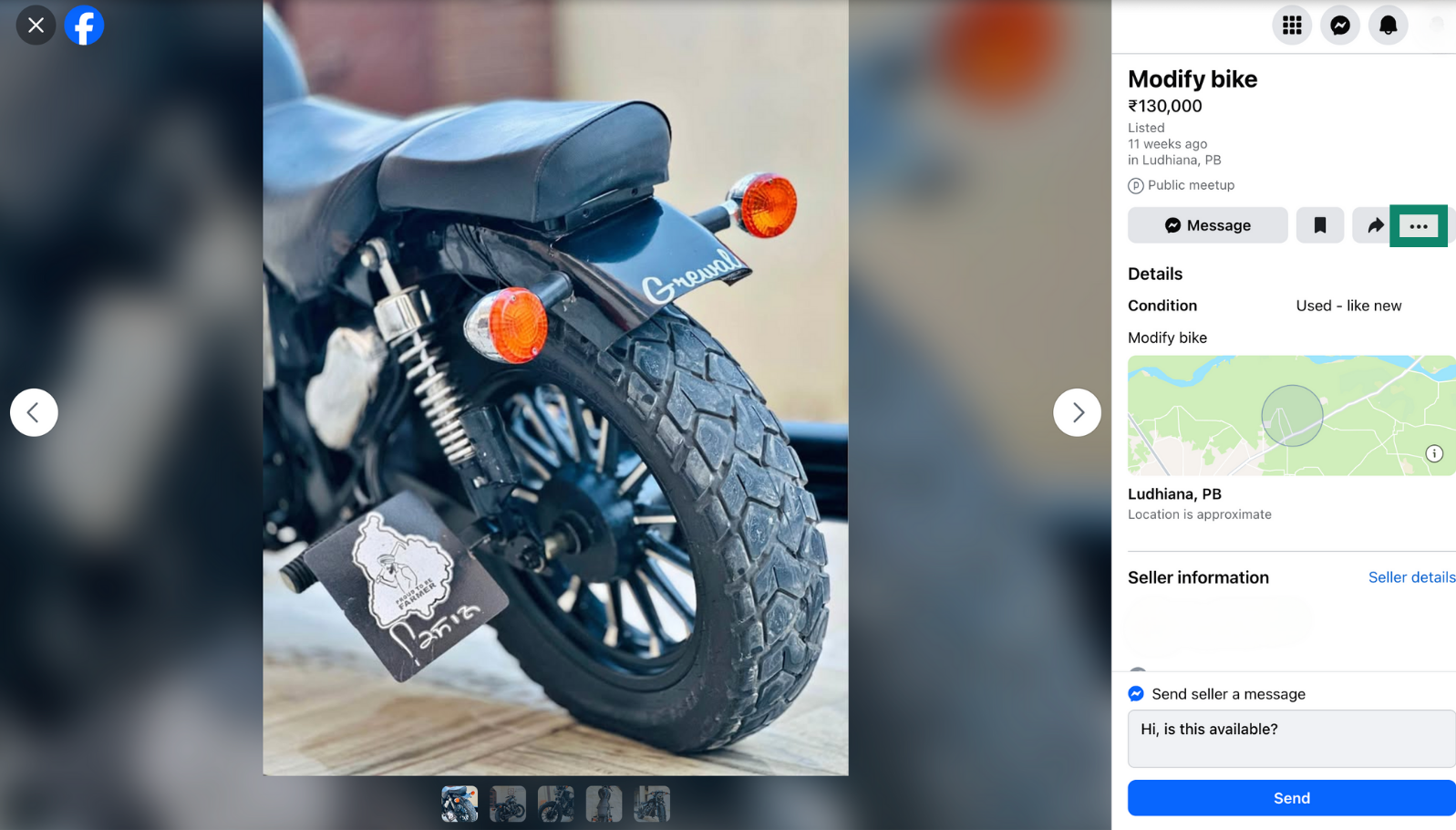
- Select Report listing.
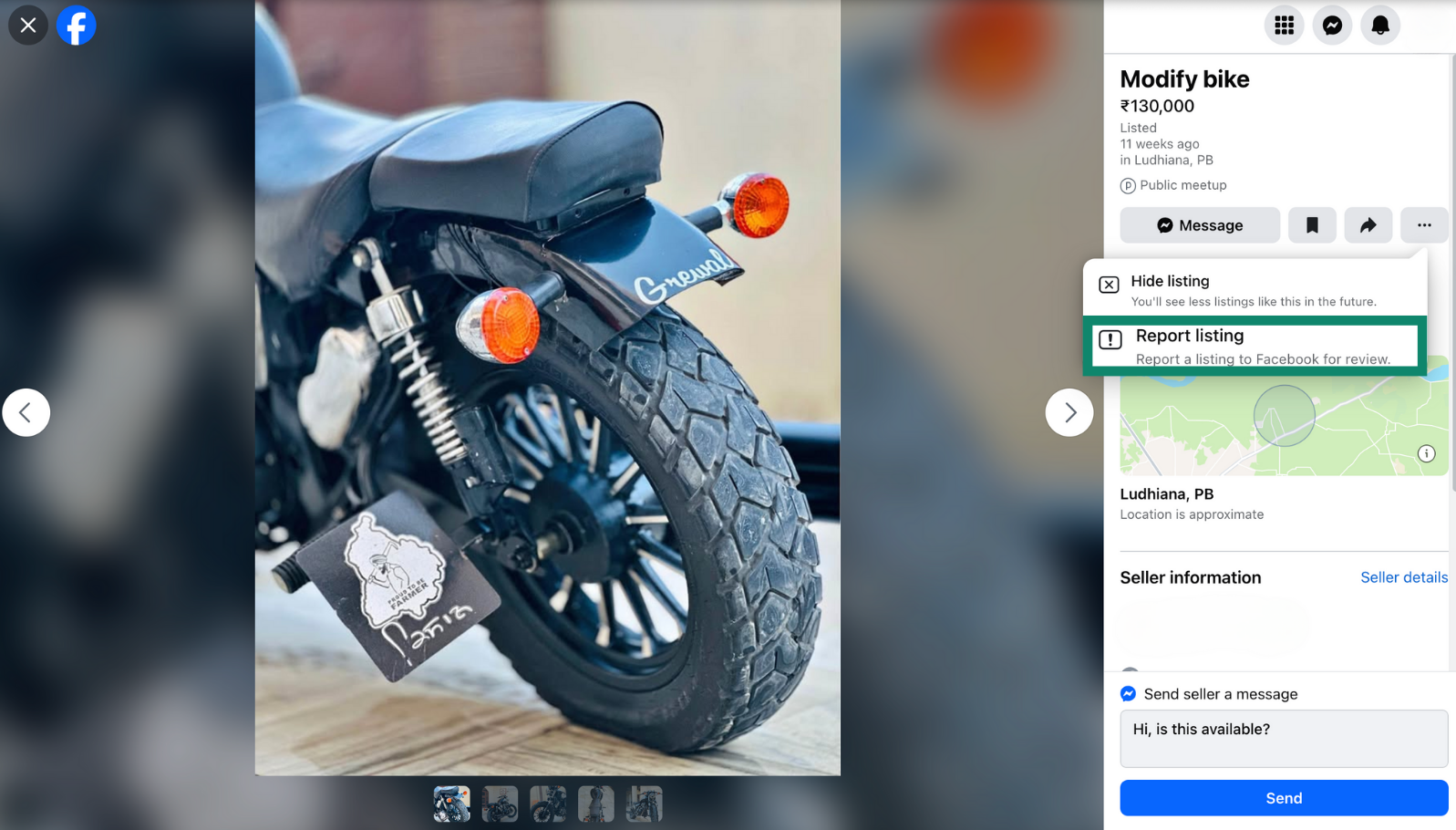
- Choose the most accurate reason, such as Scam or Inaccurate Description. Follow the on-screen instructions to submit your report.
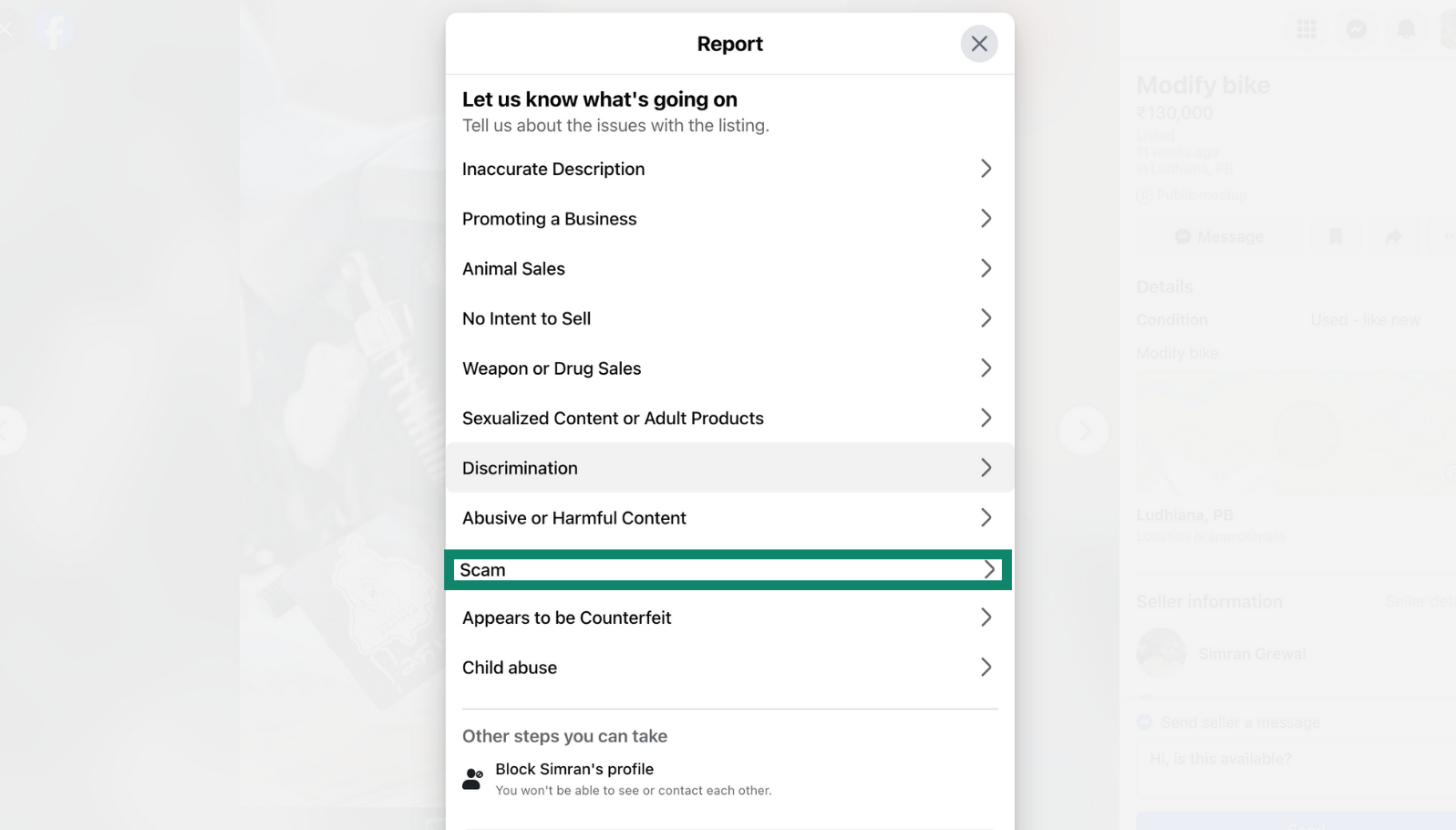
How to report a seller scam
- From your Feed, click Marketplace in the left menu.
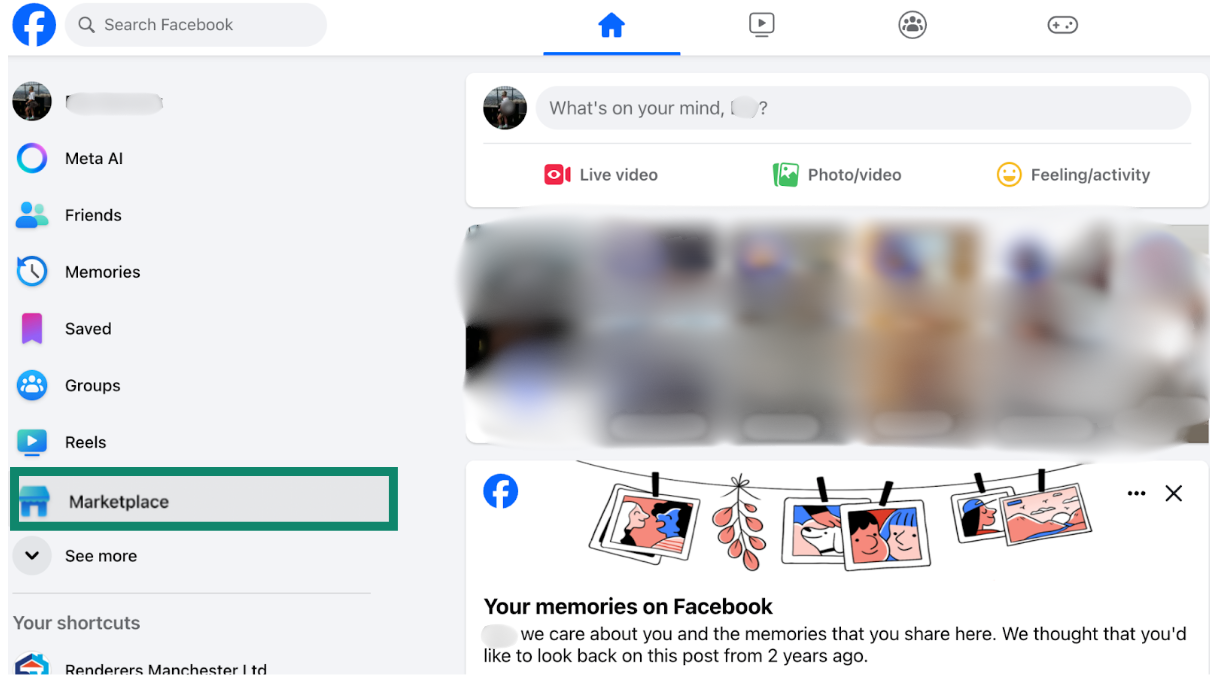
- Select Buying, then click the relevant listing.
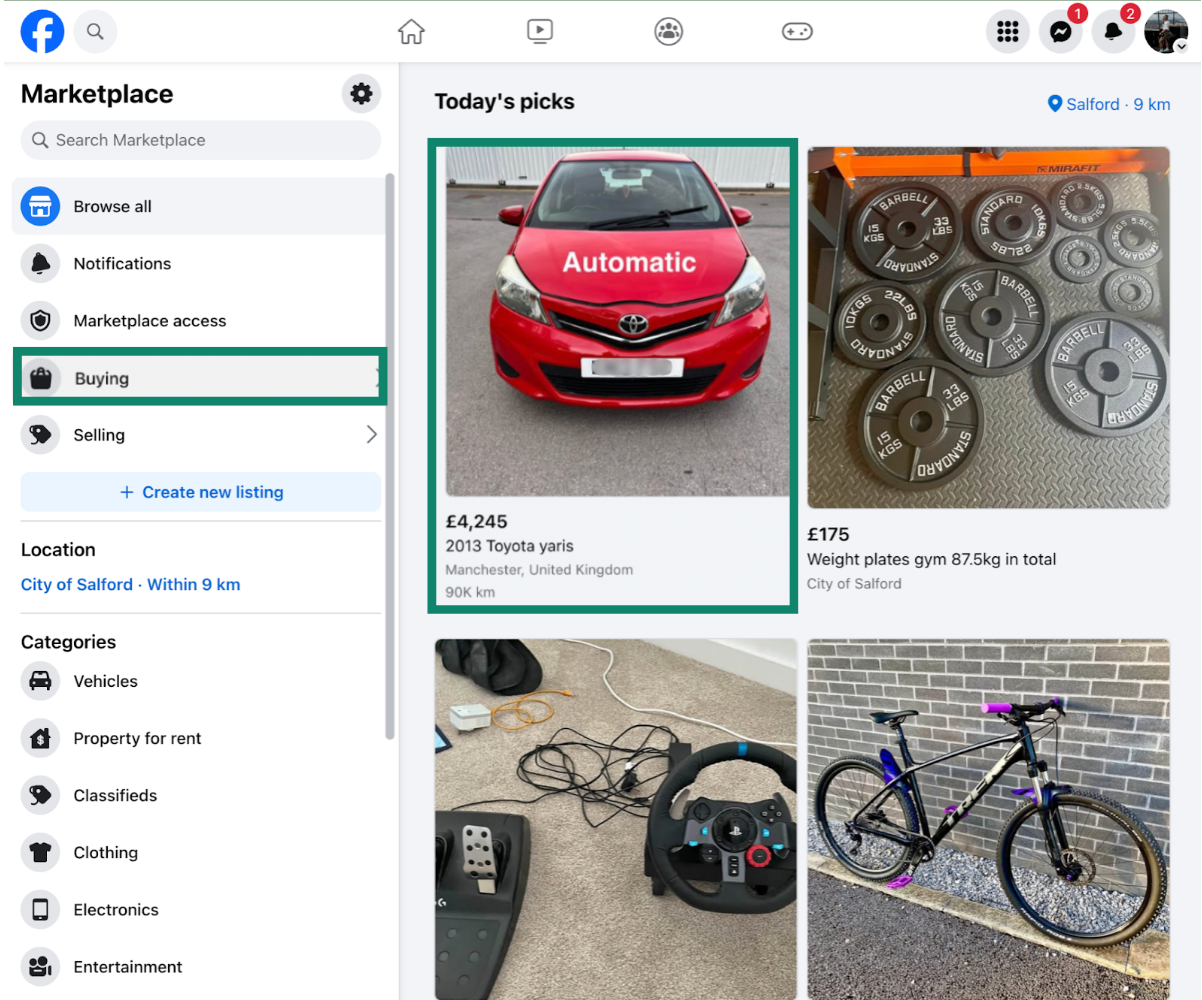
- Click the seller’s name to open their profile.
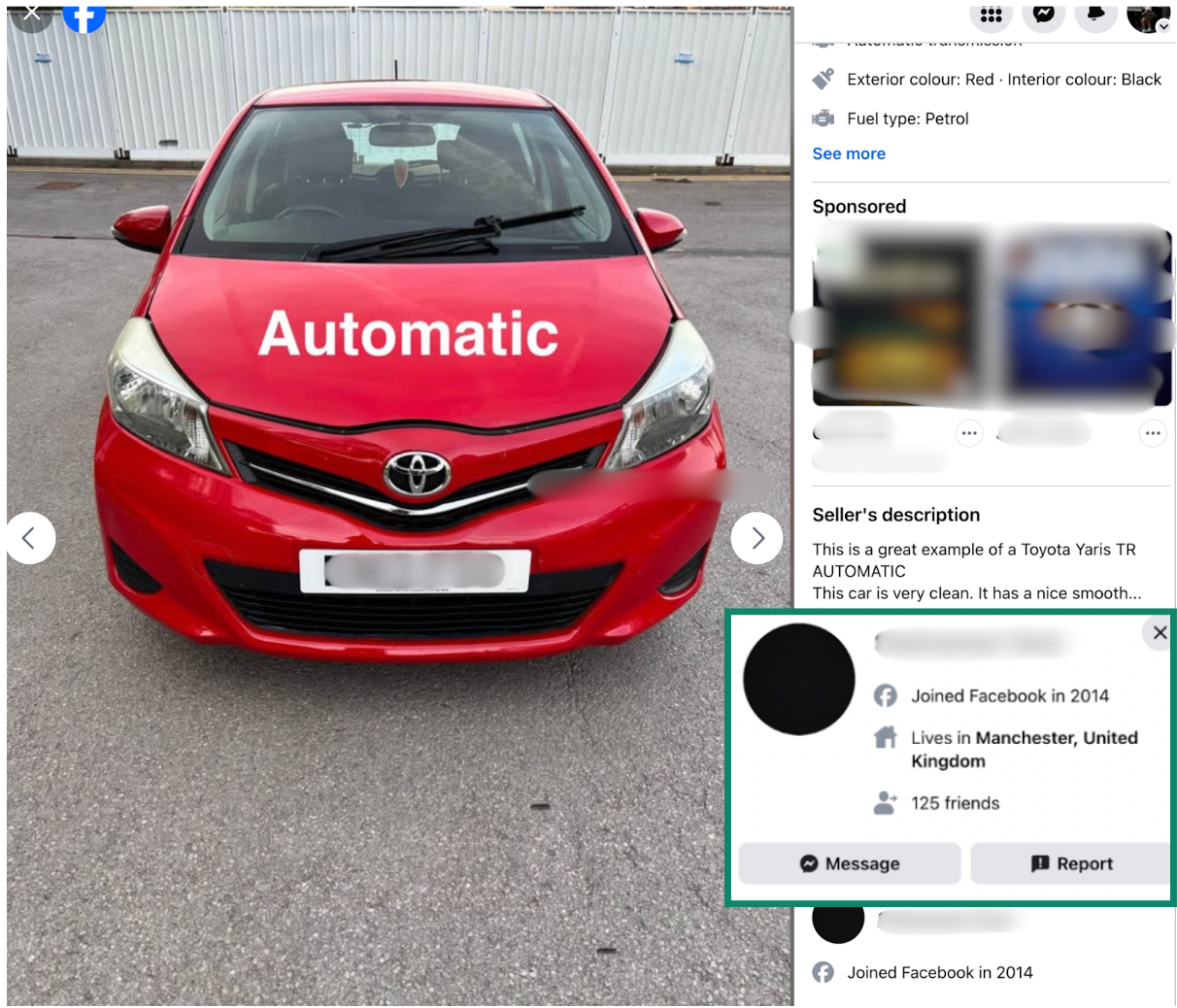
- Tap Options (three dots) and select Report.
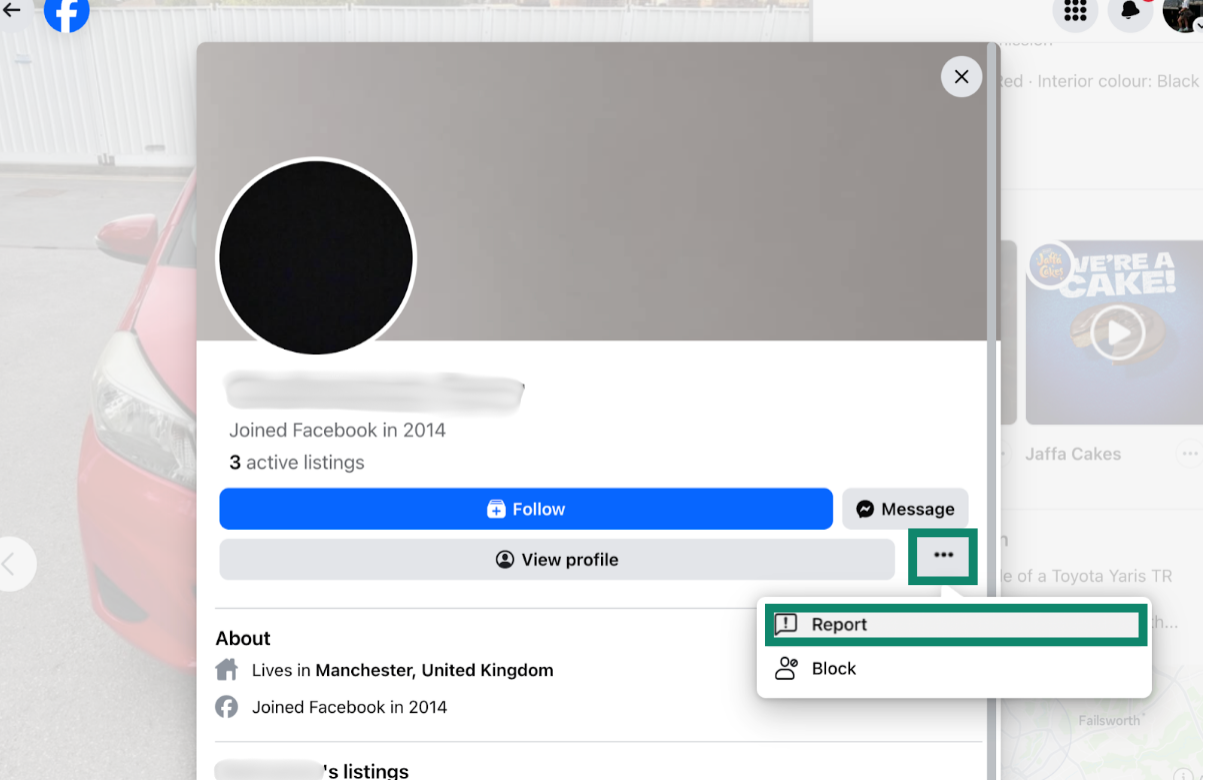
- Choose Scam and follow the on-screen steps.
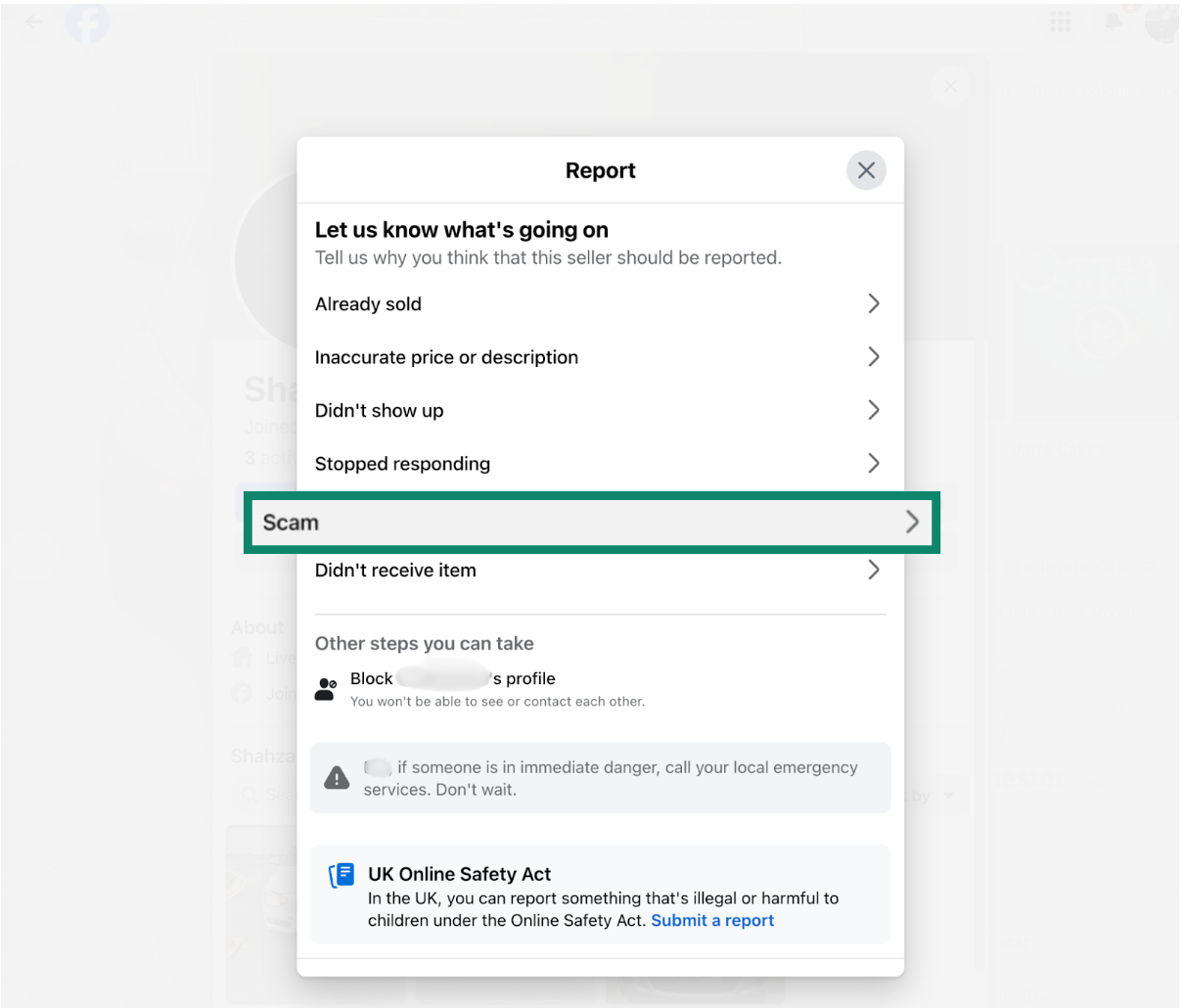
How to report a buyer scam
- From your Feed, go to Marketplace > Selling.
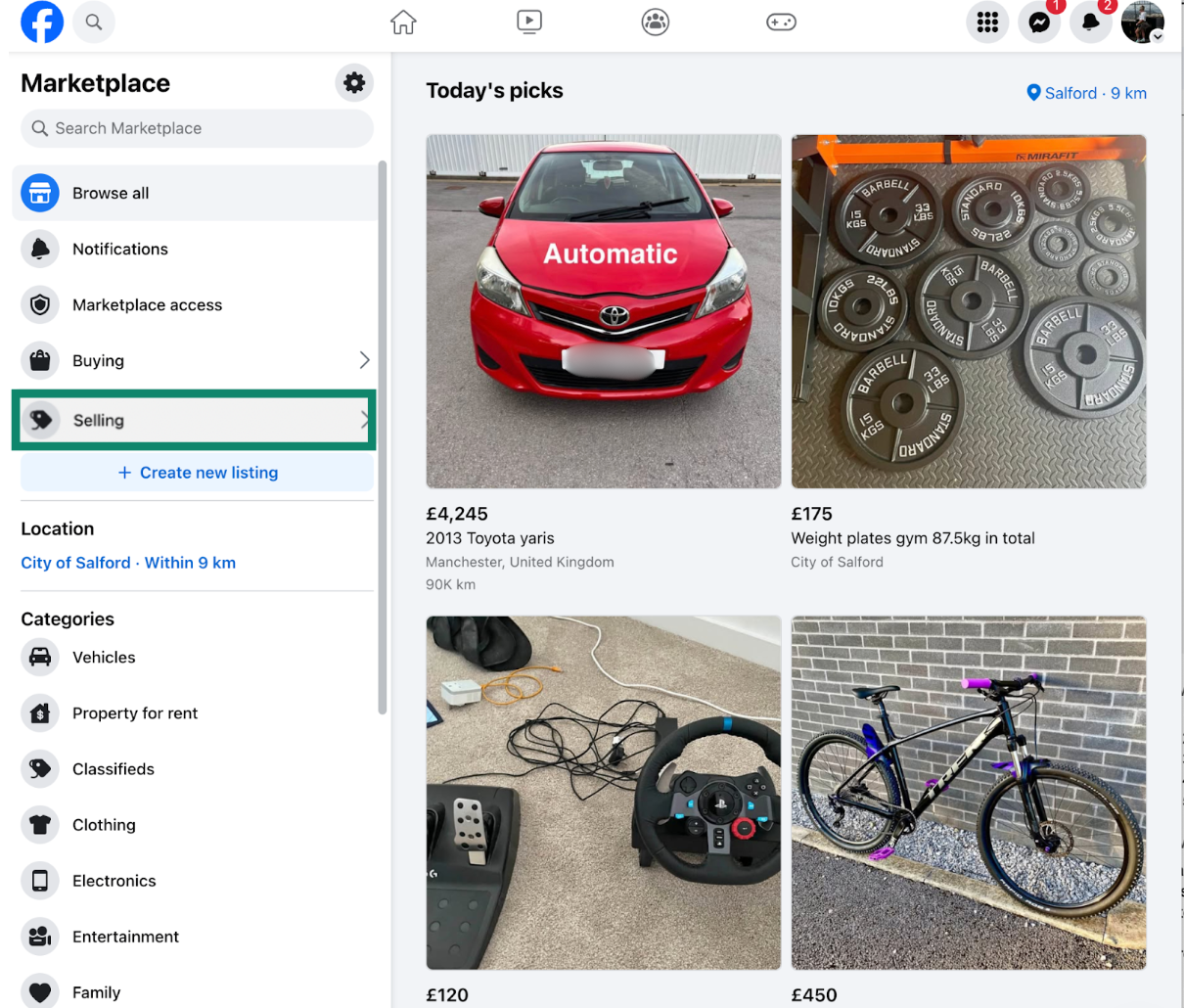
- Click Your account > Seller dashboard.
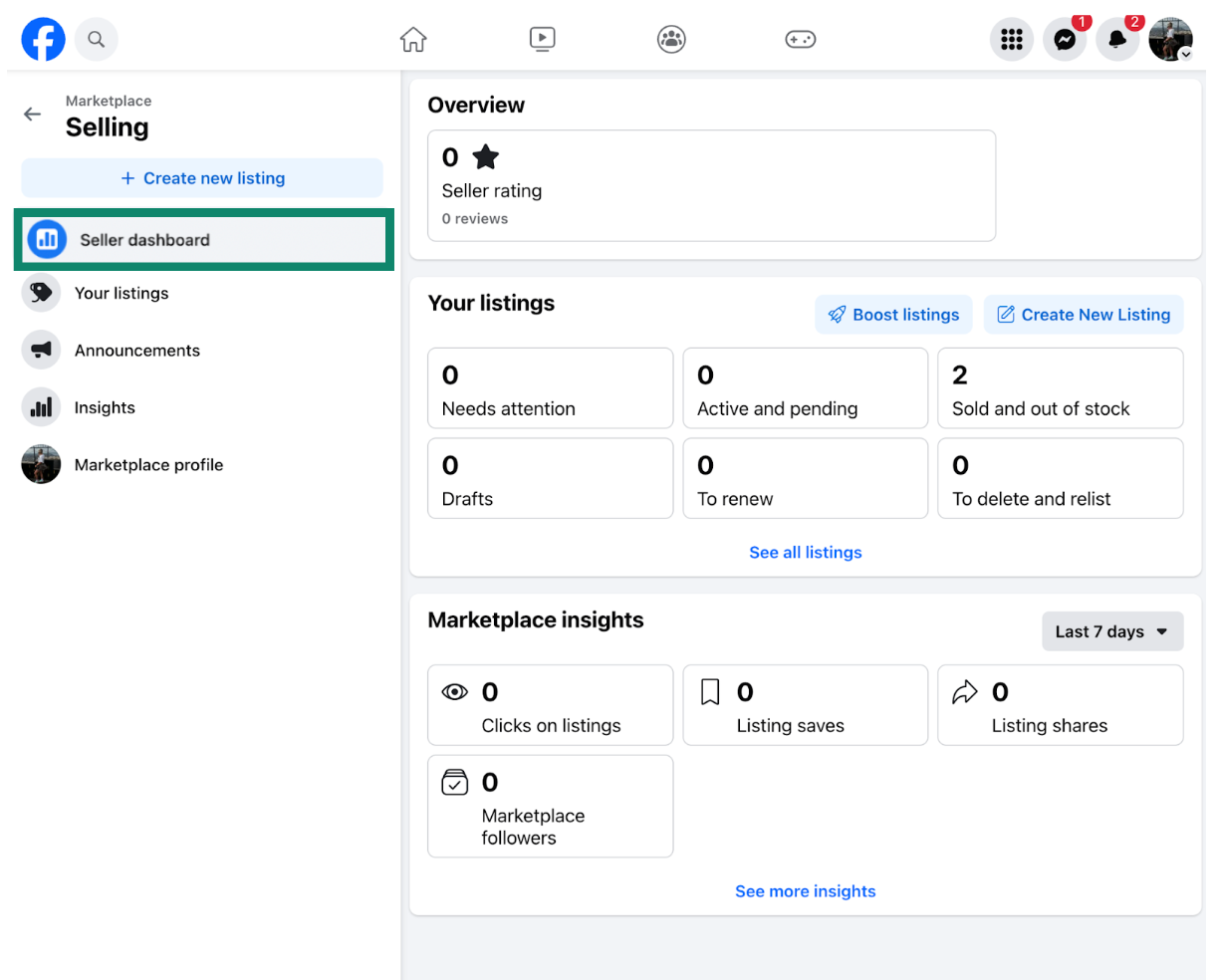
- Open the listing that was purchased, click on the three dots (...), then click View messages.
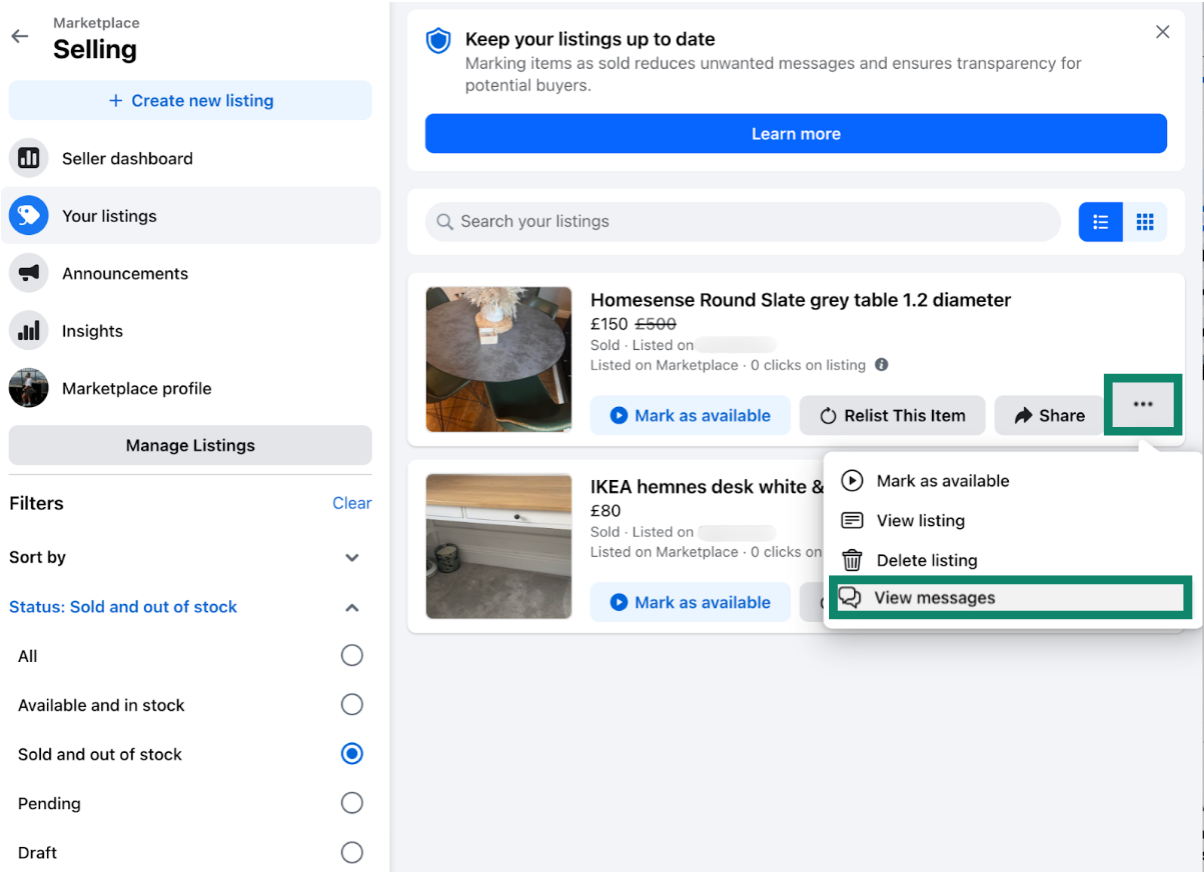
- In the chat with your buyer, click the drop-down arrow next to the buyer’s name and choose Report.
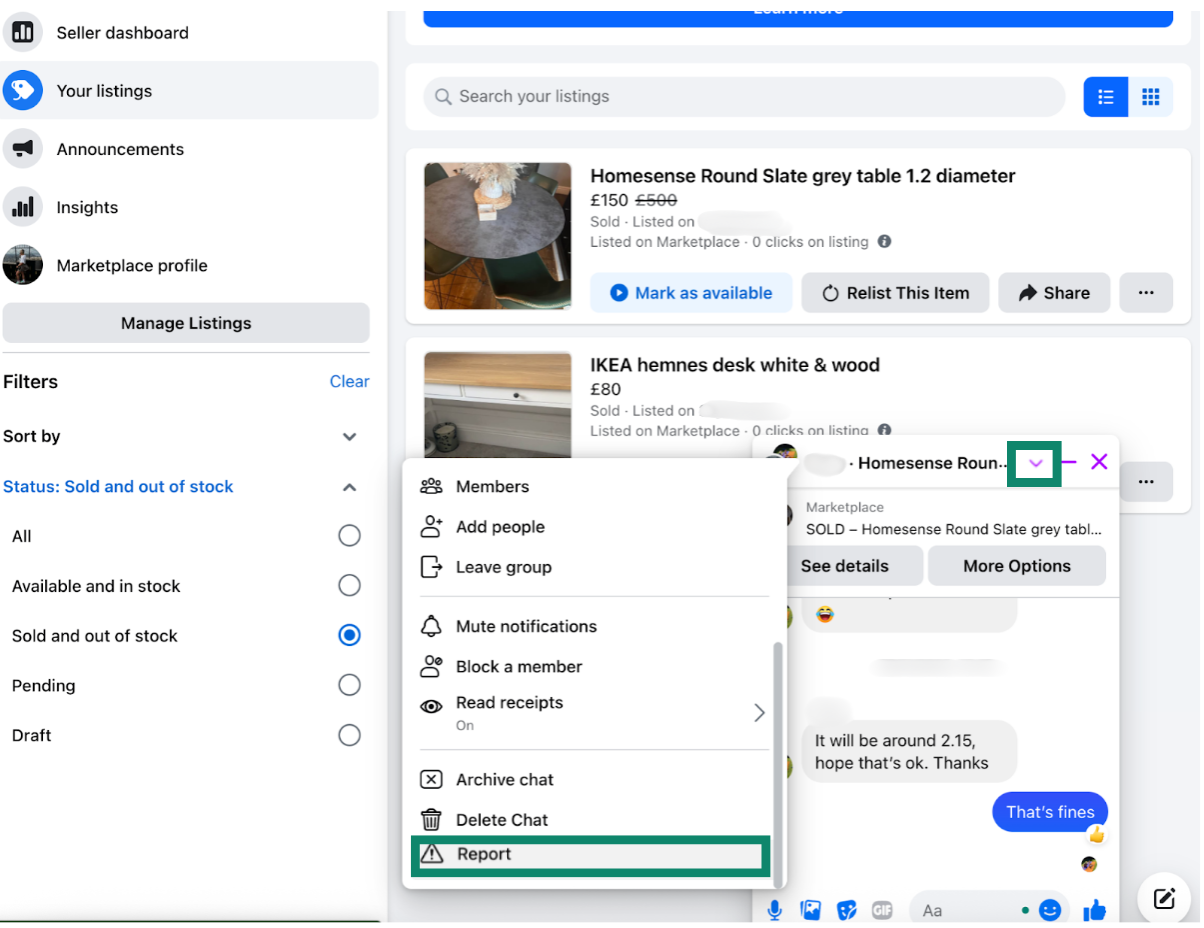
- Select Scam.
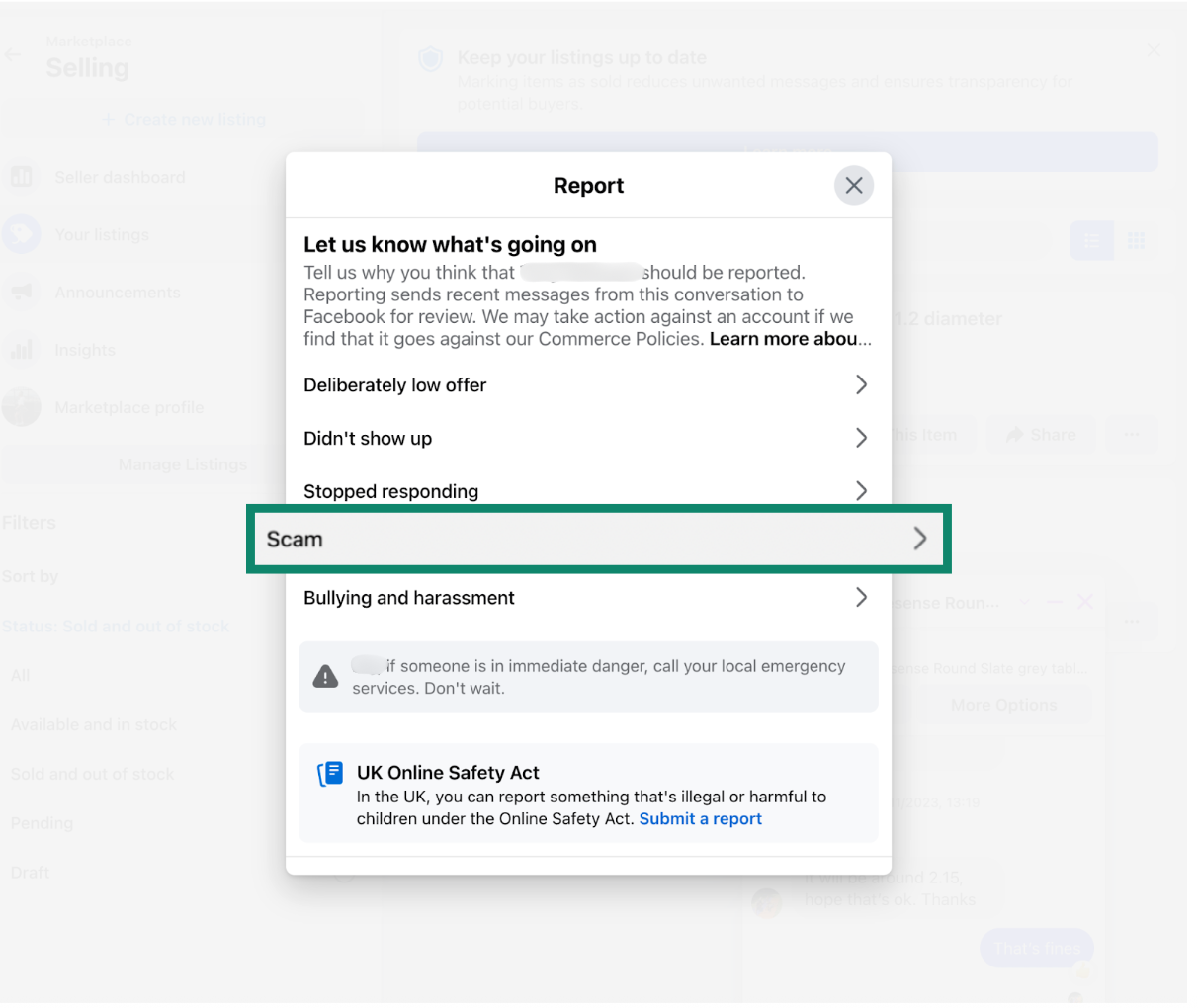
How to report a message
Scammers often reach out through Facebook Messenger to close deals off-platform, send fake payment links, or pressure buyers into quick decisions. Reporting these messages helps Facebook detect fraud patterns and take down repeat offenders faster.
To report a suspicious message in Messenger:
- On mobile, press and hold the message. On desktop, click the three dots next to the message.
- Select Report.

- Choose Scam or fraud.
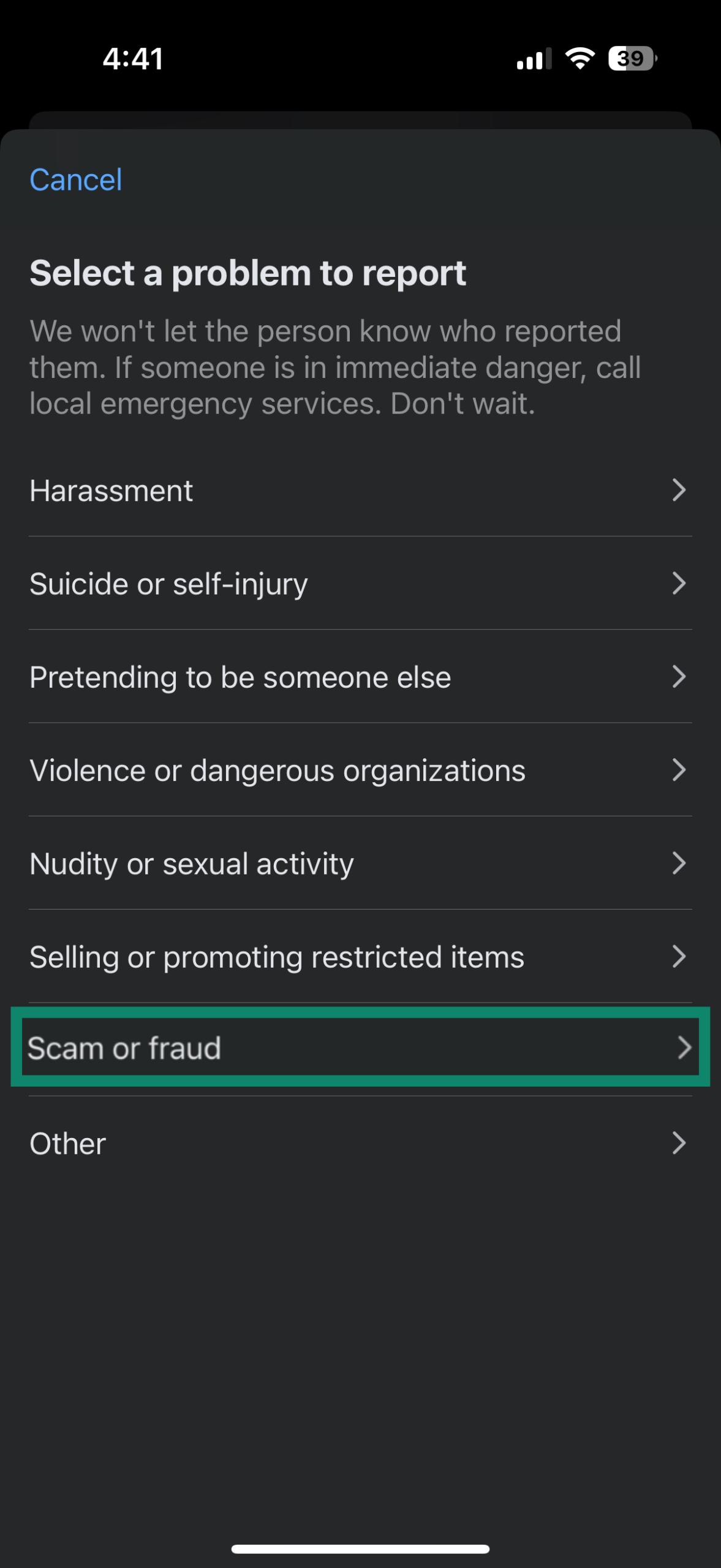
- Click Submit report.

Reporting doesn’t always lead to immediate removal, but it helps Facebook track scam patterns over time. The more reports a user receives, the more likely their account will be reviewed or suspended.
Can you get your money back?
Whether you can recover funds depends entirely on how the transaction was handled.
If you used Facebook Checkout and the item qualifies, you may be covered by Facebook’s Purchase Protection and can request a refund. This applies if the item never arrives, arrives damaged, or is significantly different than described. If approved, Facebook refunds the full item cost, plus tax and shipping. To qualify, you must:
- File your claim within 45 days of delivery.
- For unauthorized purchases, file within 60 days of the charge.
- If you never got the item, wait 2 days after the estimated delivery date before filing.
If you paid using other methods, Facebook won’t be able to help. Your only options may be requesting a chargeback through your payment provider or pursuing legal action, like filing a police report or small claims case.
Before filing a claim, Facebook recommends contacting the seller directly. Seller not responding? You can escalate the issue through the Help Center.
Contacting Facebook support
For most Facebook Marketplace users, support options are limited. There’s no live chat, phone number, or broad email help desk for all buyers and sellers, but there are a few ways to get help. Your best bet is to:
- Go to Facebook and tap your profile picture at the top right.
- Choose Settings & privacy and then click on Settings.
- Open Accounts Center in the side menu.
- Select Meta Pay.
- Next to Activity, pick See all to view your orders.
- Find the order you need help with and choose Contact seller for help.
- Fill in the details about your issue and hit Send to submit it.
After you contact Facebook, they’ll review the issue and any messages between you and the seller about that order. Keep in mind they can only review the Messenger conversation you had with the seller about this transaction.
If you report a listing, buyer scam, seller scam, or message, Facebook may take action, but you won’t always be notified. If they do follow up, the message will appear in your Support Inbox, which you can find under Help & Support in the app or on the website. Facebook doesn’t send confirmation emails, and there’s no guaranteed response time.
There’s also a “Report a Problem” form inside the app, but it’s mainly for bugs and technical issues, not scams, fraud, or transaction disputes. Submitting this form won’t help resolve Marketplace issues.
In short, while options are limited for most casual Marketplace transactions, there is help available, mostly for orders made through Facebook Checkout. Otherwise, all you can do is report scams through the platform, monitor your Support Inbox for updates, and if you lost money, consider filing a dispute with your payment provider or reporting it to local authorities.
The one exception is for business accounts using Commerce Manager. If you manage a verified Facebook Page and sell through Facebook Shops or run ads, you may get access to live chat or email support via the Meta Business Help Center. This level of support is not available to regular Marketplace users.
FAQ: Common questions about Facebook Marketplace
How common are scams on Facebook Marketplace?
Scams are common enough that you should treat every deal with caution. The platform’s low barrier to entry makes it easy for bad actors to create fake profiles, post false listings, and vanish after payment. Facebook has systems in place to flag suspicious behavior, but most of the filtering still falls on the user.
Is it safe to give out your address on Facebook Marketplace?
Only when absolutely necessary. For local deals, meet in a public, well-lit spot, preferably one with security cameras. If shipping is needed, use Facebook’s official Checkout system after you’ve vetted the buyer and agreed on payment. Even then, avoid using your home address if you can. A nearby landmark or workplace is usually safer.
Can I trust a seller with no reviews on Facebook Marketplace?
Not without caution. No reviews doesn’t always mean a scam, but it does raise a red flag. Check how old the profile is, how many items they’ve listed, and whether anything feels rushed or inconsistent. If the seller avoids meetups or pushes for quick payment, it’s safer to back out.
What are the signs of a scam buyer?
Scam buyers usually move fast and talk vaguely. They might agree to buy without asking questions, offer extra money out of nowhere, or insist on paying with gift cards or shady apps. Some will say they’ll “send a mover” or ask for your email or phone to take things off-platform. If anything feels rushed, impersonal, or just off, trust your gut.
Can I get scammed on Facebook Marketplace even if I meet in person?
Yes, and it happens more often than you’d think. Some sellers bring broken, fake, or different items than what was advertised. Others rush the handoff or pressure you to pay before a full inspection. Always meet in a public place, take your time checking the item, and never feel bad about walking away if something feels wrong.
Is buying safe on Facebook Marketplace?
It can be safe if you take precautions. Marketplace doesn’t verify listings or sellers, so safety depends on how you handle the transaction. Stick to public meetups, inspect items before paying, and avoid payment methods like wire transfers or gift cards. Use Facebook Checkout to help protect your purchase.
What is the safest way to sell on Facebook Marketplace?
Meet the buyer in a busy, well-lit public place; never at your home. Stick to cash or secure apps (like PayPal Goods and Services) and avoid gift cards. Keep the conversation on Messenger so there’s a record, and don’t ignore red flags like pushy behavior or unusual requests. If anything feels off, cancel the deal.
How do I know if a Facebook Marketplace buyer is legit?
Check their profile age and ratings, but focus on how they communicate. Scammers often avoid specifics, rush the deal, or ask for gift cards or verification codes. A legitimate buyer confirms details, sticks to standard payment, and doesn’t pressure you.
Take the first step to protect yourself online. Try ExpressVPN risk-free.
Get ExpressVPN



